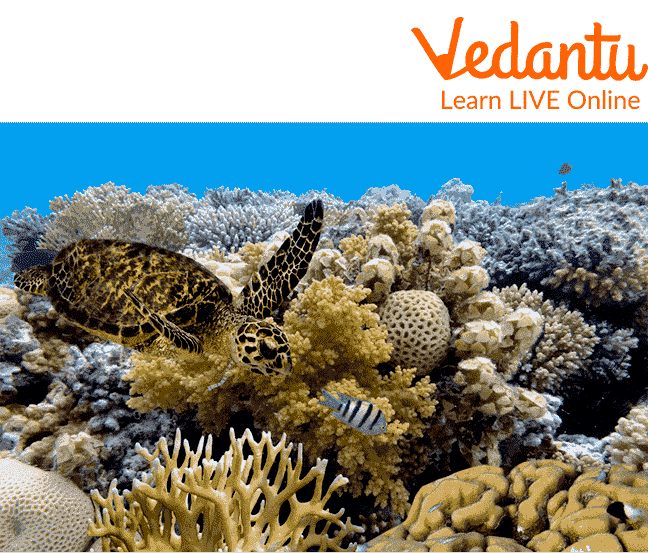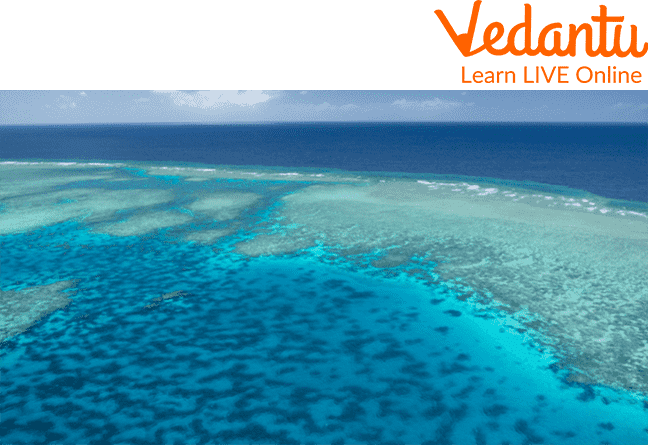




Let’s learn more about the Great Barrier Reef
Diverse marine species are supported by coral reefs like the Great Barrier Reef off the coast of Queensland, Australia, in special underwater environments. When you step back and take a closer look at the Great Barrier Reef, you can see why it is considered one of the seven natural wonders of the world. It is the only living item that can be seen from space and is bigger than the Great Wall of China. So let’s dive in and gather more Great barrier reef information and learn some fascinating things about it and have a look at the Great Barrier Reef Pictures.
Length of the great barrier reef and where is the great barrier reef found
The Great Barrier Reef, which stretches 1,429 miles over an area of around 133,000 square miles, is the world's biggest coral reef system. Off the coast of Queensland, Australia, in the Coral Sea, is where the reef is found.
The reef is made up of around 3,000 distinct reefs and is big enough to be seen from space. The Great Barrier Reef Marine Park Authority of Australia oversees a large portion of the Great Barrier Reef as a marine protected area. The largest living structure in the world is the Great Barrier Reef.

Satellite Photograph of the Great Barrier Reef
What formed the Great Barrier Reef?
The Great Barrier Reef, which is made up of living coral growing over dead coral that may be up to 20 million years old, is a very old and massive collection of living organisms. A wide array of living things, including coral, algae, anemones, sponges, fish, worms, starfish, turtles, molluscs, snakes, crabs, and an incredible array of hundreds of species of plants and animals, have grown into gigantic stone walls from generations of dead coral.
Despite the lack of concrete evidence, the first contact between humans and the reef must have happened some time ago. We are aware that for around 40,000 years, Aboriginal people lived in large portions of the Australian continent. Indigenous and Torres Strait Islander peoples have navigated between the islands of the reef region while fishing, hunting, and exploring its seas. The Great Barrier Reef region was dry and composed of vast, flat coastal plains for a significant portion of that time, during periods of glacial activity.

The Vast species living in the Great Barrier Reef
Some Facts about the Great Barrier Reef
Some of the Great Barrier Reef Facts include the following
The world's largest system of coral reefs is the Great Barrier Reef.
Off the coast of Queensland, Australia, in the Coral Sea, it can be found.
The largest living structure in the world is the Great Barrier Reef.
It consists of 900 islands and over 2900 distinct reefs.
The Great Barrier Reef spans a distance of around 2600 kilometres (1616 miles).
The Great Barrier Reef is visible to astronauts from space.
Coral, which are marine creatures, are crucial to the establishment of the Great Barrier Reef.
Calcium carbonate, which coral produces, hardens into a skeleton-like shell.
Fish, sea turtles, gigantic clams, seahorses, sea snakes, nudibranchs, stingrays, sharks, and many other types of animals live in the Great Barrier Reef.
The Great Barrier Reef is home to more than 1500 different fish species, including the clownfish that is the main character in the animated movie Finding Nemo.
On the Great Barrier Reef, you can also witness dugongs, whales, and dolphins.
Perhaps the greatest threat to the Great Barrier Reef is climate change.
Coral is stressed by warmer water temperatures, which causes coral bleaching.
An estimated 2 million people visit the Great Barrier Reef each year, making it a well-liked tourist destination.

Highest Coral Cover
Summary
In this article about the Great Barrier Reef, we have learnt various information on the Great Barrier Reef. The Great Barrier Reef is the largest coral reef system in the world. A healthy coral reef system is essential to the existence of our planet. A quarter of the marine life in the ocean lives there, they provide clean air, and they shield fragile coastlines from erosion, flooding, and storms. The Great Barrier Reef is the world's largest living structure. With this, we have come to an end of the article, in case of any other doubts feel free to ask in the comments.
FAQs on Great Barrier Reef Information
1. Where is the Great Barrier Reef located?
The Great Barrier Reef is located in the Coral Sea, off the coast of Queensland, Australia. It is the world's largest coral reef system and is so big that it can even be seen from outer space.
2. What is the Great Barrier Reef made of?
The Great Barrier Reef is not a single large rock but a massive living structure. It is made up of billions of tiny animals called coral polyps. These polyps build hard, protective skeletons, and over thousands of years, these skeletons accumulate to form the huge reef structures we see today.
3. How was the Great Barrier Reef formed?
The formation of the Great Barrier Reef is a natural process that took thousands of years. It began when tiny coral polyps attached themselves to rocks on the seabed. As these polyps lived and died, their hard calcium carbonate skeletons built up, layer upon layer, creating the complex and massive reef system that exists now.
4. Why is the Great Barrier Reef so important for our planet?
The Great Barrier Reef is incredibly important for several reasons:
- Biodiversity: It provides a home to thousands of different species of fish, turtles, sharks, and other marine life.
- Coastal Protection: It acts as a natural barrier, protecting the coast of Queensland from strong waves and storms.
- Scientific Research: It helps scientists understand climate change and the health of our oceans.
5. What are some interesting facts about the Great Barrier Reef for students?
Here are a few fun facts about this amazing natural wonder:
- It is larger than the entire country of Italy.
- It is not one single reef but a collection of over 2,900 individual reefs and 900 islands.
- It supports over 1,500 species of fish and more than 200 types of birds.
- Some parts of the reef are estimated to be around 20,000 years old.
6. What is coral bleaching and why is it a problem for the reef?
Coral bleaching happens when the ocean water gets too warm. This heat stresses the corals, causing them to push out the tiny algae that live inside them. These algae are what give the coral its colour and food. When the algae are gone, the coral turns white and can starve to death if the water temperature doesn't return to normal. This is a major threat to the health of the Great Barrier Reef.
7. Can you swim in the Great Barrier Reef?
Yes, you can swim and snorkel in the Great Barrier Reef. There are many designated safe swimming areas for tourists. Tour operators ensure that visitors can enjoy the beautiful underwater world without harming the delicate coral or encountering dangerous animals.









